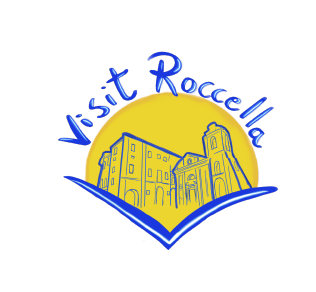translated with AI
The Church of Sant’Anastasia is located in the heart of the Borgo district, which began to develop in the second half of the 18th century.
A community of Jesuits led by Father Giovanni Maldonato was in Roccella, probably on a mission, during Holy Week in 1753. It was on April 23 of that year when these religious, along with many residents of Roccella, asked the then bishop, Monsignor Cesare Rossi, for permission to build a new church dedicated to Saint Francis Xavier, the founder of the Jesuit order. The day after, Wednesday after Easter, at 1 o’clock in the afternoon with a procession, the first stone was blessed and laid in the foundations of the front part, in the corner of the Gospel. In the same episcopal document, the name “Borgo Maggiore” appears for the first time.
The following year, during a pastoral visit by the same Bishop, it was recorded that the church was under construction. Consulting the parish registers, it is evident that the population was enthusiastic about the new church in the Borgo, choosing the auspicious name of Francesco Saverio for their children.
In the first decades after its construction, this church was referred to as Ruralis Ecclesia and was a subsidiary of the Mother Church of San Nicola di Bari at the Castle.
The earthquake of 1783 did not cause serious damage to the structure, while the major damage was mostly concentrated in the houses and churches within the castle walls; for obvious reasons and for greater convenience, people subsequently preferred to rebuild their homes by the sea, with a preference for the Borgo area.
Due to the earthquake, it was also necessary to transfer the three existing parishes within the city.
In 1786, it was proposed that the parish of Santa Anastasia be relocated to this church, and Father Francesco Tassone was appointed as the curate. From 1789, this transfer became effective, and the church definitively abandoned the original name of San Francesco Saverio.
In the second half of the 18th century, numerous families of artisans, related to each other, moved to the Borgo from the surrounding villages, and with their activities along Via Garibaldi (then called Strada Borgo Maggiore), they gave new impetus and vitality to the entire neighborhood. Even now, many elderly residents of Roccella call the area beyond the church, towards the Convent of San Giuseppe, ‘i Putigheji (the small shops).
The Church of the Borgo thus became an important point of spiritual reference and social aggregation.
On September 6, 1798, the establishment of the lay Confraternity of Maria SS. Addolorata was granted, better known at that time as the Confraternity of ‘u Burgu, which settled in this church, establishing the homonymous altar.
For more than half a century, this temple was also used for underground burials, as evidenced by a large common pit located in the center of the nave: the first to be buried was a girl named Vittoria, who died on September 5, 1800, and the last was Maria Teresa Cunia, who died on March 4, 1863, at the age of only two. The only private tomb belonged to the Confraternity of Maria SS. Addolorata.
During the period 1835-1838, several perpetual chaplaincies were established in the Church of Santa Anastasia under the title of Maria SS. Addolorata (for the spouses Biase Reggio and Father Rosa de Angelis); Souls of Purgatory (of Father Francesco Armocida); of the Archangel Raphael (of master Raffaele de Angelis and Teresa Aly, whose altar was owned by the family); another chaplaincy also at the altar of Maria SS. Addolorata (of Father Vincenzo Bottari, precisely in the years when his brother Father Francesco was the prior of the homonymous Confraternity); of the Most Holy Crucifix (of Mrs. Rosa Congiusta, widow of Nicola Curtale).
The earthquakes of 1905 and 1908 damaged the Church of the Borgo. For years, it continued in a precarious state until 1925 when a restoration project was initiated. Subsequently, there were other recovery interventions, mainly concentrated on the main facade.
One of the last restorations took place in 2007, and the blessing and reopening for worship took place on June 17 of that year.
It is worth mentioning some priests who have worked in this church in the past, supporting the work of the parish priest, such as the treasurer, confessor, caregiver for the sick, etc.: Father Vincenzo Filocamo, Father Vincenzo Bova, Father Francesco Bottari, Father Vittorio Congiusta, Father Vincenzo Cartolano, Father Giuseppe Bottari, Father Domenico Curtale, Father Giuseppe Guarneri, Father Giuseppe Pellegrino, Father Domenico Bova.
The various parish priests were Father Francesco Tassone, Father Giovanbattista Palermo, Father Vincenzo Ritorto, Father Ferdinando Minici, Father Vincenzo Armocida, Father Leopoldo Minici, Father Giuseppe Varano, and more recently, Father Antonio Toscano, Father Vincenzo Varano, Father Marco Pangallo, Father Giuseppe Varano. Father Emanuele D’Uva, and finally the beloved Father Antonio Perri, transferred to the parish of Santa Anastasia on May 1, 1960, taking up effective service on June 16 of the same year.
From January 1, 1978, he also concurrently assumed the parish of San Nicola di Bari.
